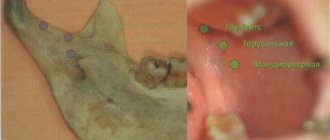Conductive blockade
- one of the effective ways to relieve pain symptoms.
The mechanism of its action is based on blocking nerve impulses that transmit information to the brain about the existing source of pain. This allows you to temporarily reduce the pain threshold and perform surgery. However, conduction anesthesia
can be used not only as one of the elements of modern anesthesia, but also as a therapeutic agent in patients who suffer from chronic pain syndrome. Thanks to it, the effect of pain relief will be achieved as quickly as possible, while the risk of complications will be minimized. Conduction anesthesia in Moscow can be performed in the multidisciplinary clinic CELT. We employ experienced specialists who have modern equipment and effective drugs at their disposal.
At CELT you can get advice from a specialist algologist.
Make an appointment
Peripheral blockade under ultrasound navigation RUB 5,000.
15 minutes
(duration of procedure)
Types of conduction blockades
Types of conduction anesthesia
are distinguished based on various parameters:
- method of influence;
- drugs used;
- purpose of application;
- localization;
- developer
All types of blockades are presented in the table below:
| View | Peculiarities |
| Drug therapy | |
| Local: periarticular, perineural | The injection is made directly into the site of the lesion, around the affected areas or under them: into periarticular tissues or channels through which nerves pass |
| Segmental: paravertebral, vertebral | They have an analgesic effect through crossed nerve fibers. Provide for the introduction of drugs into the paravertebral region in order to relieve pain, reduce swelling, relieve spasms |
| Classification by drugs used | |
| Monocomponent | One drug is used |
| Dicomponent | Two drugs are administered |
| Multicomponent | More than two drugs are used |
| Classification by purpose of use | |
| Medicinal | A safe technique that eliminates pain syndromes or is part of a complex treatment for pathologies accompanied by severe pain |
| Diagnostic | Aimed at identifying the causes of pain as accurately and quickly as possible and making the correct diagnosis. The mechanism of conduction pharmacological blockade is such that when an anesthetic is introduced into the “pain generator” it subsides, thanks to which the doctor is able to make a more accurate diagnosis |
| Classification by localization | |
| Spinal block: intercostal, lumbar, neck | It has an analgesic and therapeutic effect, allows you to treat vertebral hernia, and is carried out under the control of a fluoroscope. It is used for the following diseases:
|
| Joint blockade: knee, shoulder | Relieves pain, restores mobility and function of the limbs, injection is carried out directly into the affected area. Applicable for:
|
| Sciatic nerve block | The drug is administered directly into the nerve, thereby blocking the transmission of impulses along the nerve trunk. Allows you to eliminate pain, inflammation, spasms |
| Classification by developer | |
| According to Vishnevsky: intrapelvic, intercostal, intravenous, paravertebral | Different types of conduction novocaine blockades, which are carried out to interrupt pain impulses during:
|
| According to Catlen | The injection is carried out into the opening of the sacral canal and is used for osteochondrosis |
Conduction anesthesia of the upper extremities using subclavian access
Key words: conduction anesthesia, subclavian access
In recent years, methods of regional anesthesia have been widely used in various fields of surgery. This is due both to the introduction of modern medical technology and to the synthesis of safe local anesthetics, which is especially important for operations on the upper extremities, which are characterized by longer duration and more trauma. The use of regional anesthesia during these operations allows one to avoid complications of general anesthesia, especially in patients with a high degree of risk (concomitant cardiac pathology, diabetes, etc.), allows for early postoperative activation of the patient and does not require large material costs [2-4].
Material and methods. We used the technique of conduction anesthesia of the upper extremities using a subclavian approach during traumatological, orthopedic and microsurgical operations: fractures of the forearm bones with traumatic damage to tendons and blood vessels (12 patients, 37%), condition after metal osteosynthesis (10 patients, 31%), application of an arteriovenous shunt for program hemodialysis (5 patients, 15%), post-traumatic compressive neuropathy (3 patients, 9%) and others (2 patients, 8%).
32 patients aged from 18 to 70 years were operated on, of whom 18 were men, 14 were women. 12 patients had concomitant diseases (coronary artery disease, arterial hypertension, diabetes mellitus).
The anesthesia technique consisted of premedication with atropine 0.3-0.5 mg, dormicum 2.5-5 mg and fentanyl 50 µg intravenously on the operating table. Then, through the subclavian approach, a puncture of the brachial plexus was performed using PAJUNK (Geisingen/Germany). After receiving a response—contraction of the muscles of the fingers—bupivacaine 0.5% in an amount of 30 ml was administered using the GAMID [1,2,4]. The block usually occurred after 30 minutes and lasted up to 3.5-4 hours, intraoperative monitoring was carried out using the Infinity Vista , system blood pressure, blood pressure diast., blood pressure average, Sp02, heart rate, ECG were determined.
Results and discussion. The effectiveness of the brachial plexus block was adequate.
In 3 patients, due to insufficient mosaic anesthesia, the operation was continued under multicomponent intravenous anesthesia. After the end of the operation, patients were transferred to the ward with stable hemodynamic parameters. There were no complications associated with conduction anesthesia using the subclavian approach.
Conclusion. Conducting conduction anesthesia using a subclavian approach during operations on the upper extremities is a safe method that avoids complications of general anesthesia.
Literature
- Mulroy M. Local anesthesia. Illustrated practical guide Ed., 2nd, 2005, 301 p.
- Ostrovsky N.V., Taraskin A.F., Polyaev V.O., Popov A.Yu. Conduction anesthesia of the extremities. 2007, 48 p.
- James P. Ramphele, Joseph M. Neal, Christopher M. Viscuomi. Regional anesthesia. The most essential things in anesthesiology. 2007, 272 p.
- Mayer G., Büttner J. Peripheral regional anesthesia. 2010, 260 p.
What medications are used?
Conducting conduction anesthesia
involves the use of various medications. Their selection is carried out individually, depending on the patient’s indications and the characteristics of the case. We invite you to familiarize yourself with the features of the drugs that are most often used during conduction blockades. They are presented in the table below:
| Drug name | Peculiarities | Advantages and disadvantages |
| "Novocaine" | It is a transparent solution with a percentage of 0.25% to 2%. It is most often used for blockades | Provides a quick pain relief effect (within 2 - 7 minutes), which lasts about 2 hours. May cause allergies and vascular reactions |
| "Lidocaine" | A frequently used drug that has an increased therapeutic index | It is characterized by low toxicity, high permeability, absence of allergic and other negative reactions. Provides pain relief effect for several hours |
| "Merkain" | Local anesthetic, has an analgesic effect no earlier than 10-20 minutes after administration. Used to block peripheral nerves | It has a prolonged effect, which can last from 3 to 5 hours. May have negative effects on the kidneys, liver and heart |
| "Hydrocortisone" | Steroid hormone in the form of a suspension for injection | Requires mixing with anesthetic. Gives good results when performing intra-articular blockades |
| "Dexamethasone" | A hormonal drug whose activity is thirty times higher than that of Hydrocortisone. Used for blockades of soft tissues and joints | Does not affect electrolyte metabolism. Has a quick but short-lasting effect |
Complications of brachial plexus block
Migachev S.L., Sviridov S.V. Russian State Medical University, Moscow
In recent years, in domestic and foreign anesthesiology there has been a boom in the use of regional anesthesia (RA) methods for operations on the upper extremities. Currently, 60-80% of traumatological and orthopedic operations in adult patients are performed under RA.
Benefits of regional anesthesia
The increasing interest of anesthesiologists in regional methods of pain relief is due to the relatively high effectiveness of brachial plexus block (BPB) during operations on the upper extremities. Thus, according to the literature, the percentage of adequate blockades can be, depending on the method of conduction blockade and the level of surgical intervention (hand, forearm, shoulder or upper arm) from 97.3% to 79.0% (2,5,10). A higher frequency of inadequate anesthesia is observed during operations in the shoulder and shoulder girdle, which is due to the complex innervation of this region by the branches of the brachial, superficial cervical plexus (supraclavicular nerves) and the intercostobrachial nerve. Important advantages of RA over general anesthesia methods are a decrease in the severity of postoperative pain, a decrease in the body's neurohumoral response to surgical trauma, a decrease in intraoperative blood loss, an improvement in microcirculation in the operated limb [4], and a decrease in the number of pulmonary complications.
Performing a regional block with long-acting local anesthetics (bupivacaine, ropivacaine) allows for effective analgesia for 6-18 hours after surgery.
Complications of brachial plexus RA
The brachial plexus RA technique involves perineural or intraneural injection of a local anesthetic (LA) solution to the nerve trunks. In this case, theoretically, there is a risk of damage to the nerve structures, both from the tip of the injection needle and as a result of increased intramural pressure in the nerve trunk (hydraulic rupture of the nerve). The literature describes cases of post-injection neuropathy, the development of which is explained by the authors as a prolonged and severe spasm of the vasa nervorum caused by the vasoconstrictor effect of adrenaline. Epinephrine is known to be used to reduce the systemic toxic effects of LA and prolong the effect of anesthesia.
However, when analyzing the literature data, it turns out that the frequency of neurological complications with brachial plexus block is extremely low. So Fursaev V.A. (1966) analyzing 12,787 anesthesia, only in 59 cases (0.46%) indicates neurological complications, which are also reversible. Pashchuk A.Yu. (1987), summarizing 7554 cases of conduction anesthesia, noted the development of post-injection neuropathy in 0.04% of observations.
Thus, today there is an opinion that complications of BPS are more often caused not by injury to the nerve trunks with the development of neurological deficit, but by unintentional blockade of nearby nerve structures, damage to blood vessels or the dome of the pleura, as well as the systemic toxic effect of LA.
The brachial plexus is located in close proximity to many anatomically important structures of the neck. So, in the area of exit from the intervertebral foramina, the plexus passes 1-2 cm medial to the carotid artery. The vertebral artery is located in the canal formed by the transverse processes of the cervical vertebrae, in close proximity to the nerve roots. The recurrent laryngeal, phrenic nerves and stellate ganglion are located in the same cellular space as the brachial plexus. The epidural space is connected to the prevertebral tissue, in which the brachial plexus is located, through the intervertebral foramina [12]. In the cervical spine, in the area of the nerve root cuffs, diverticulum-like protrusions of the dura mater often form, which through the intervertebral (foramin) openings can extend beyond the spinal column and be located in the paravertebral tissue. In more distal sections (in the supraclavicular region), the brachial plexus passes in close proximity to the dome of the pleura, in the same fascial sheath with the subclavian artery.
Intravascular administration of LA or its rapid adsorption from richly vascularized areas (deep neck muscles) leads to a systemic toxic effect, most often manifested by symptoms of neurotoxic action (muscle tremors, numbness of the tongue, dysarthria, somnolence, focal or generalized convulsive seizure). The cardiotoxic effect of MA in the form of various arrhythmias (cases of ventricular fibrillation with the use of bupivacaine) and a decrease in systemic blood pressure due to inhibition of myocardial contractility are rarely recorded in clinical practice.
Complications when using interscalene access
BPS from the interscalene approach is the most popular RA method for shoulder and glenohumeral surgery. During operations on the forearm and hand, interscalene blockade is used less frequently due to the high incidence of inadequate anesthesia of the C7-T1 dermatomes (the innervation zone of the ulnar and medial cutaneous nerves of the forearm). This is the highest approach to the brachial plexus. Technically, the anesthetic solution is injected into the fascial sheath of the brachial plexus in close proximity to the intervertebral foramina. Since the cervical and brachial plexuses are located in a single fascial sheath, with interscalene blockade, as a rule, complete or partial anesthesia of the cervical plexus is observed.
According to the literature and our own observations, interscalene blockade cannot be considered a safe method of RA. When performing it, numerous complications are possible, incl. life-threatening, which is mainly due to the proximity of many anatomically important structures of the neck to the site of the regional block. Thus, epidural spread of LA solution can lead to the development of bilateral epidural blockade
cervical and upper thoracic segments with the appearance of sensory and motor blockade of the opposite upper limb, arterial hypotension, bradycardia, and shortness of breath [1].
Total spinal block
develops with subarachnoid injection of LA solution, most often with accidental puncture of a dural diverticulum [13].
Among the expected complications when performing an interscalene blockade, an increased incidence of toxic reactions
, which is associated with the rapid adsorption of MA from the injection site. Compared to other types of RA, only intercostal blockade produces a higher peak concentration of LA in the blood.
Unilateral phrenic nerve block
develops in 100% of patients during interscalene blockade [2,14]. Characteristic is a decrease in external respiration parameters - vital capacity (VC) by 19.7-24.5%, forced vital capacity (FEV1) by 16.6-24.5%, functional residual capacity of the lungs - by 34-37% [ 7]. Patients experience a statistically significant decrease in paO2 and an increase in respiratory rate. In persons with diseases of the respiratory and cardiovascular systems, a decrease in respiratory reserve may be accompanied by the appearance or intensification of shortness of breath and the development of respiratory hypoxia.
Horner's syndrome may develop in 30-50% of patients after interscalene blockade
due to blockade of the stellate ganglion and cervical sympathetic trunk.
Blockade of the recurrent laryngeal nerve
leads to hoarseness of the voice [6].
After performing BPS using the interscalene approach, the development of sympathetic reflex dystrophy
- one of the forms of complex regional pain syndrome, manifested by severe pain in the limb, vasomotor changes, and trophic disorders [11].
Unintentional injection of LA into the vertebral artery causes rapid development of an epileptic seizure
[3].
Complications when using supraclavicular and infraclavicular access
With (supra-) and subclavian access to the brachial plexus, reliable anesthesia of the entire upper limb and shoulder joint is achieved, with the exception of the skin in the deltoid, axillary region, and medial surface of the shoulder. The most serious complication of BPS through the supraclavicular approach (according to Kulenkampf) is damage to the dome of the pleura and lung with the development of pneumothorax. The frequency of this complication in experienced anesthesiologists does not exceed 2-3%. The literature describes cases of tension pneumothorax that developed after Kulenkampff BPS. For this reason, this approach cannot be recommended in outpatient anesthesiological practice, as well as for anesthesia of both upper extremities.
A modification of the supraclavicular Kulenkampf approach is the subclavian paravascular approach according to Winnie. This approach is becoming increasingly popular among anesthesiologists. The fundamental difference between these techniques is that with the supraclavicular approach the search for the brachial plexus is carried out on the upper surface of the first rib, and with the subclavian paravascular approach - in the clavicular-costal space. This reduces the likelihood of damage to the pleura and lung. The risk of pneumothorax with BPS using this technique is minimal.
Puncture of the subclavian artery with the development of hematoma of the supraclavicular region is a common complication of (supra-) and subclavian approaches. However, in patients with normal blood clotting parameters, in most cases the hematoma does not reach a significant size, does not lead to compression of the neurovascular bundle, and resolves without consequences.
Characteristics of clinical material
Group I consisted of 65 patients (38 men and 27 women) who underwent conduction anesthesia of the brachial plexus using the subclavian paravascular approach according to Winnie
Group II – 54 patients (32 men and 22 women) who underwent interscalene blockade for intraoperative pain relief.
Executing a regional block
Identification of PS was carried out by searching for paresthesias. For anesthesia, a mixture of 2% lidocaine solution in a volume of 10 ml (200 mg) and 0.5% marcaine in a volume of 20 ml (100 mg) was used. In the absence of contraindications, adrenaline was added to a concentration of 1:200,000. This prescription of anesthetics for regional anesthesia was used in patients of all study groups.
In all cases, an aspiration test was performed before LA injection and after the administration of every 10 ml of solution.
The time from the moment of RA to the start of the operation was 35±5 minutes. After performing a regional blockade, patients were administered midazolam (Dormikum ® ) 1.5–5 mg by titration to a state of mild sedation. To reduce psycho-emotional and positional discomfort during surgery, small doses of dormicum (1.5 - 2.5 mg bolus) and fentanyl (0.05 mg bolus) were used. The average consumption of dormicum in groups I and II for 1 hour of surgery was 2.28±0.91 mg, fentanyl - 0.07±0.03 mg.
Analysis of intraoperative complications when performing regional anesthesia
Performing RA of the brachial plexus using the subclavian paravascular approach according to Winnie was not accompanied by significant and serious complications. However, we noted the following complications in patients of group I. In 2 (3.0%) patients, after administration of the calculated doses of MA, the occurrence of muscle tremors and numbness of the tongue was noted. These symptoms were regarded as a toxic effect of MA. In 9 (13.8%) patients, the subclavian artery was unintentionally punctured when performing a regional block. It should be noted that none of the patients had a hematoma in the supraclavicular region. In 3 (4.6%) patients, identification of the brachial plexus was difficult; regional blockade was performed after multiple attempts. There were no cases of pneumothorax (diagram no. 1).
| Diagram No. 1. Complications of regional anesthesia in patients of group I (n=65). |
Thus, the number of complications in patients of group I was low, not a single severe complication was recorded, which indicates the safety of this method of regional anesthesia.
When analyzing complications in patients of group II, a significant frequency of adverse reactions was noted that were associated with the interscalene anesthesia technique itself, which involves the introduction of a LA solution into a well-vascularized space near numerous nerve structures. Thus, in 3 (5.5%) patients, epidural spread of AF was observed with the development of blockade of the opposite upper limb, which was accompanied by bradycardia and arterial hypotension. Of these, 2 (3.7%) patients, due to bilateral paralysis of the phrenic nerves, developed a clinical picture of acute respiratory failure, manifested by shortness of breath, tachypnea, and decreased arterial blood saturation.
In 2 (3.7%) patients, toxic effects of MA were observed, manifested by muscle tremors, numbness of the tongue, and motor agitation. In 2 (3.7%) patients, immediately after performing the interscalene blockade, a grand mal seizure developed.
In one patient, 5 minutes after administration of the MA solution, the appearance of ventricular extrasystole was noted, which was explained by the cardiotoxic arrhythmogenic effect of bupivacaine or adrenaline, which is part of the MA mixture.
32 (59.2%) patients had Horner's syndrome, manifested by ptosis, miosis, enophthalmos, and conjunctival hyperemia from the side of the blockade. The clinical picture of Horner's syndrome developed within 25 minutes in all patients. The duration of symptoms ranged from 8 to 18 hours.
In 17 (31.5%) patients, after performing interscalene blockade, the appearance of hoarseness was noted due to unilateral blockade of the recurrent laryngeal nerve.
Technical difficulties in identifying the brachial plexus were noted in 4 (7.4%) patients.
| Diagram No. 2. Complications and side effects in patients of group II (n=54). |
Thus, in almost all patients with interscalene blockade, the occurrence of one or more adverse reactions or complications was noted (diagram No. 2) associated with the systemic effect of MA or concomitant blockade of nearby nerve structures (phrenic nerve, recurrent laryngeal nerve, sympathetic chain, roots of the contralateral brachial and cervical plexuses). Most complications of interscalene blockade can be classified as mild and transient in nature. However, bilateral blockade of the phrenic nerves with the development of a clinical picture of acute respiratory failure and a major convulsive seizure required emergency treatment measures and were classified by us as complications of moderate severity.
conclusions
• The most typical complications of interscalene block are Horner's syndrome (59.2%), paresis of the recurrent laryngeal nerve (31.6%), bilateral phrenic nerve palsy (5.5%), convulsive syndrome (3.7%), neurotoxic effect of local anesthetic (5.5%), manifested by numbness of the tongue, muscle tremors, drowsiness. The likelihood of developing severe complications of anesthesia (total spinal block, grand mal seizure, epidural spread of LA solution with the development of clinical signs of acute respiratory failure) requires some limitation for the widespread use of interscalene block in anesthesiological support of operations on the upper extremities.
• The most serious complication of brachial plexus RA using the supraclavicular Kulenkampff approach is pneumothorax caused by damage to the dome of the lung. For this reason, this approach cannot be recommended for outpatient anesthesiology practice, as well as for anesthesia of both upper extremities.
• Conductor block of the brachial plexus using the subclavian paravascular approach according to Winnie is a highly safe method of RA for operations on the hand and forearm. When performing this blockade, the risk of severe complications of anesthesia is minimized. During operations on the shoulder and shoulder joint, this blockade should be supplemented with a conduction blockade of the branches of the superficial cervical plexus (supraclavicular nerves), and during surgical manipulations on the inner surface of the shoulder, also with a blockade of the intercostobrachial nerve.
Literature
- Gileva M.N. Conduction anesthesia. Kharkov, RIP "Original", 1995, 109 p.
- Popov V.Yu. Options for conduction anesthesia of the brachial plexus in trauma patients. // Diss. Ph.D. honey. Sciences, 1999, Novosibirsk, 107 p.
- Morgan Jr. J. Edward., Magid S. Michael. Clinical anesthesiology. M.: from Binom, 1998, pp. 253-357
- Svetlov V.A. Anesthetic support for reconstructive and plastic surgeries using microsurgical equipment. // Dissertation of Doctor of Medicine. Sciences, Moscow, 1989
- Al - Kaisy A, McGuire G, Chan VW, Bruin G, Peng P, Miciaci A. Analgesic effect of interscalene block using low - dose bupivacaine for outpatient arthroscopic shoulder surgery. // Reg Anesth Pain Med, 23(5), 469-73 1998 Sep - Oct
- Aitkenhead AR, Smith G. Guide to anesthesiology. 2nd edition., M.: 1997
- Dagli G., G Ё uzeldemir ME; Volkan Acar H. The effects and side effects of interscalene brachial plexus block by posterior approach. // Reg Anesth Pain Med, 23(1):87-91 1998 Jan-Feb
- Bonica JJ. Cousalgia and other reflex sympathetic dystrophies. //Postgrad. med. 1973, 53, 143-148
- Brown D.L.; Ransom DM; Hall JA; Leicht CH ; Schroeder DR; Offord K.P. Regional anesthesia and local anesthetic-induced systemic toxicity: seizure frequency and accompanying cardiovascular changes. // Anesth Analg, 81(2):321-8 1995 Aug
- Franco CD; Vieira Z.E. 1,001 subclavian perivascular brachial plexus blocks: success with a nerve stimulator. // Reg Anesth Pain Med, 25(1): 41-6 2000 Jan-Feb
- John H., Gillespie DO, Emil I., Menk MD, Robert E. Reflex sumpathetic Dystrophy: complication of interscalene Block. // Anesth Analg, 1987, V.66, N.2, p.1316-1317
- Jochum D; Roedel R ; Gleyze P; Balliet JM. Interscalenic block and surgery of the shoulder. A prospective study of a continuous series of 167 patients. // Ann Fr Anesth Reanim, 16(2):114-9 1997
- Norris D; Klahsen A; Milne B. Delayed bilateral spinal anaesthesia following interscalene brachial plexus block. // Can J Anaesth, 43(3):303-5 1996 Mar
- Sala-Blach X., L'azaro JR., Correa J., Cr'omer – Fernander. Phrenic nerve block caused by interscalene brachial plexus digital pressure and allow volume of local anesthetics. // Reg Anesth Pain Med, 23(3):231-5, 1999, May-Jun
Regional anesthesia and pain management. Thematic collection. Moscow-Tver 2004, pp. 100-108
How much does the procedure cost?
In the multidisciplinary clinic CELT, the cost of the blockade ranges from 5 thousand rubles. You can find out the exact cost of the procedure in the corresponding section of our website, by calling us or visiting a consultation. The cost of the procedure depends on the following factors:
- type of drugs used;
- the affected part of the spine on which the procedure will be performed;
- equipment that will be involved in the process.
How is the blockade carried out?
There are different techniques for carrying out blockades. Their choice is made individually, depending on the case and the patient’s indications. Conductor blockade is a procedure for administering drugs by injection into the tissue surrounding a nerve in order to anesthetize certain areas of the body. The drug used is usually a solution of novocaine, which is slowly injected through a syringe needle. The effect occurs almost immediately and covers the desired area.
| Type of blockade | Indications for use | Features of the event |
| Paravertebral |
|
|
| Epidural |
|
|
Possible complications
If you want to minimize the risk of complications from conduction anesthesia
in Moscow, contact the CELT clinic. Our doctors have performed this procedure many times and know how to avoid them. It is customary to distinguish the following types of complications:
- toxic - arise as a result of incorrect selection of dosage and concentration of the drug or its penetration into the vascular bed, characterized by various symptoms: from dizziness to falling into a coma;
- inflammatory - appear as a result of improper procedure, use of an inappropriate or expired drug, and are characterized by the development of periostitis, meningitis;
- allergic - characterized by various symptoms, ranging from itching and drop in blood pressure to difficulty breathing and cardiac arrest;
- traumatic - consist of damage to blood vessels, nerves, pleural or abdominal cavity during a procedure with corresponding symptoms.
Conduction anesthesia
Conduction anesthesia: definition, technique, indications, complications
Conduction anesthesia of the upper limb
What is conduction anesthesia
Conduction anesthesia is one of the types of anesthesia in which nerve transmission is blocked in the area of the body where the operation is planned, which results in complete immobilization and pain relief.
Synonyms for conduction anesthesia: nerve block, peripheral anesthesia, nerve anesthesia, brainstem anesthesia, nerve block, conduction anesthesia.
Conduction anesthesia is one of the types of regional anesthesia.
How does the patient feel during conduction anesthesia?
At the site of conduction anesthesia, the patient may experience various sensations. At the moment of puncture with a needle, there is either slight discomfort or some pain, the severity of which is no more than the pain felt when taking blood from a vein for a test. When a local anesthetic is administered, feelings of heaviness, bloating, and heat may occur in the anesthetized area. If no technical difficulties arise during conduction anesthesia, then the duration of unpleasant sensations is calculated in only a few seconds.
During the operation, conduction anesthesia guarantees a complete absence of pain with a clear consciousness of the patient. If the patient feels anxious and wants to sleep, then conduction anesthesia can be combined with sedation.
How does conduction anesthesia work?
Anesthesia during conduction anesthesia is achieved due to the blockade of a nerve or group of nerves through which the pain impulse is transmitted from the source of pain (the site of surgery) to the brain, which processes this signal and gives it to us directly in the form of a sensation of pain. Depending on which nerve is blocked, anesthesia for a particular area of the body will occur.
How is conduction anesthesia performed?
Technically, conduction anesthesia is one or more injections of a local anesthetic solution into the area where the nerve required for the block is located. For regional anesthesia to work, the drug must be injected in close proximity to the nerve—a few fractions of a millimeter from it. If the local anesthetic is injected a little further than the nerve, then anesthesia will not develop, and the patient will feel pain during the operation, which will require a change in anesthesia tactics, in particular, the use of a different type of anesthesia. In the event that a local anesthetic is injected directly into the nerve itself, an anesthesia complication such as neuropathy may develop (see below).
What operations can be performed under conduction anesthesia?
Unfortunately, due to the anatomical characteristics of the human body, not every part of the body can be anesthetized using conduction anesthesia. Therefore, an approximate list of the main operations that can be anesthetized using conduction anesthesia will be as follows: operations on the upper and lower extremities, operations to remove an inguinal or femoral hernia, some operations on the genital organs, operations on the thyroid gland, operations on the carotid arteries, dental operations.
What are the complications of conduction anesthesia?
The most serious complications of conduction anesthesia include the development of neuropathy, as well as the occurrence of an adverse reaction to the local anesthetic.
An adverse reaction to a local anesthetic is manifested either by the development of an allergic reaction or a systemic reaction of the body. A systemic reaction of the body occurs when a local anesthetic solution is accidentally unintentionally introduced into a blood vessel; it can manifest itself as cardiac arrhythmia, dizziness, weakness, and loss of consciousness. An allergic reaction to a local anesthetic is extremely rare, occurring in approximately 1 in 50,000 anesthetics.
Neuropathy is damage or dysfunction of a nerve, manifested by various symptoms: a crawling sensation, numbness, pain or muscle weakness in the anatomical area where anesthesia was performed. However, you should not be upset or afraid of conduction anesthesia. The incidence of neuropathy is not that high - less than 1% of cases. In addition, in most cases, complete restoration of the damaged nerve’s functionality occurs within a few months (less often within a year). And, most importantly, the development of new technologies for conduction anesthesia has made it possible to minimize the likelihood of developing this type of complication.
What makes conduction anesthesia as safe as possible?
Conduction anesthesia is made as safe and effective as possible by using ultrasound.
Ultrasound helps to perform conduction anesthesia under visual control, and not blindly, as it was before (and sometimes still occurs in the vastness of our homeland). The use of an ultrasound machine helps to see the nerve and needle, and, therefore, allows you to inject local anesthetic into the required area.
The use of ultrasound in conduction anesthesia can minimize the risk of developing neuropathy, accidental intravascular injection of a local anesthetic and, most importantly, significantly increase the success of performing a nerve block, thus obtaining one hundred percent high-quality anesthesia.
Advantages of conduction blockades
Today, there are a number of techniques that allow you to relieve pain... However, blockades remain the “leaders” in this area. And all because they have a number of advantages:
- High effectiveness of drugs due to the proximity of the injection to the affected area;
- Almost instantaneous effect of pain relief due to the rapid penetration of the medicine into the affected area;
- Minimum number of side effects due to the absence of drugs entering the general bloodstream;
- The possibility of repeating the procedure and achieving an analgesic and therapeutic effect.









